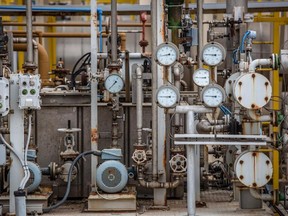Europe’s Energy Crisis Takes Unexpected Turn as Gas Shortages are Replaced by Glutting Supplies

The European energy crisis has taken an unexpected turn as gas shortages transform into a glut. The sudden shift is largely due to a combination of factors, including unusually warm weather and the successful bidding for liquefied natural gas (LNG) shipments from around the world.
Storage Levels Reach New Highs
European storage facilities are now 93.6% full, with Germany’s storage levels reaching an impressive 97.5%. This surge in storage capacity is largely due to the efforts of European countries to build up stockpiles ahead of the winter season. However, while this provides some comfort to the market, it remains a temporary solution.
Demand Reduction Remains Essential
Reducing energy usage remains crucial despite the recent drop in prices. According to Timera Energy, gas demand reduction across 2022 is estimated at about seven to nine percent, mostly driven by the shutdown of large industrial consumers. However, this is short of the EU’s target of 15% and highlights the ongoing need for demand reduction.
Weather Forecast Points to Continued Milder Conditions
The weather outlook suggests that milder-than-usual conditions will persist well into November. This has led to an influx of ships carrying LNG, with Northwest Europe on track to receive 82 tankers this month – a 19% increase from September.
Floating Storage and Ships Staying Longer in Anticipation of Higher Prices
Shipbrokers Fearnleys A/S have noted that more vessels are staying longer in floating storage, anticipating higher prices and limited capacity to receive fuel. This situation may last until mid-January, according to Oystein Kalleklev, chief executive of LNG shipowner Flex LNG Ltd.
Potential for Price Increases
While prices are currently falling, demand from Asia could pick up, and Russia could still end flows of gas that transit Ukraine – either purposefully or through infrastructure damage. This would add upward pressure on prices and make filling storage more difficult next year.
European Energy Ministers Discuss Temporary Cap on Benchmark Gas Prices
European energy ministers are discussing a temporary cap on benchmark gas prices to mitigate the impact on consumers. However, one of the main arguments against this measure is that it may make it harder for Europe to attract LNG this winter.
Experts Warn of Higher Prices and Inflationary Pressures
Katja Yafimava, senior research fellow at the Oxford Institute for Energy Studies, warns that as temperatures start to drop and storages get emptied, supply-demand mismatches will lead to higher prices. This problem is likely to become more acute during the next winter.
Conclusion
The sudden shift from gas shortages to a glut highlights the complexities of the European energy crisis. While storage levels are currently high, reducing usage remains essential, and demand reduction targets must be met. The ongoing need for demand reduction, combined with potential price increases, underscores the importance of careful planning and strategy to navigate this parallel power and gas crisis.
Recommendations
- Reducing energy usage: Reducing energy consumption is crucial to alleviate pressure on gas supplies.
- Demand reduction targets: EU countries must work towards meeting their demand reduction targets to ensure a stable supply of gas.
- Weather forecasting: Accurate weather forecasts will help predict LNG demand and plan for potential price increases.
- Price caps: Temporary caps on benchmark gas prices may be necessary to mitigate the impact on consumers, but careful consideration is required.
Sources:
- Bloomberg.com
- Gas Infrastructure Europe